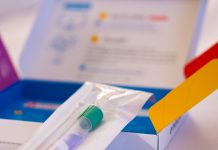New research presented in the March publication of Cell Reports has identified a group of cells that physically change their shape only after you eat a meal. Influenced by changes in blood sugar, these cells play a large role in feelings of satiety (fullness) and how the body regulates its calorie intake. Through changing shape, these specialized cells called astrocytes are the primary mechanism behind feeling full after a meal.
One of the most interesting facts about the astrocytes’ ability to change their shape—and change back again—is based on their detection of blood sugar being raised after a balanced meal, but they do not respond the same way to fat-heavy meals.
Astrocytes are nerve cells which are shaped like stars. They are associated with the central melanocortin system and sheathe neurons called POMC neurons (pro-opiomelanocortin). The POMC neurons are the neurons in the hypothalamus responsible for stimulating feelings of satiety, and it was previously believed that they were the only nerve cells involved in the physiology of fullness. Astrocytes enclose the POMC neurons in a sheath, limiting their activity.
As the astrocytes detect blood glucose levels rising after eating, they shrink and retract from sheathing the POMC neurons. Without the astrocytes enclosing them, the POMC neurons become active and stimulate the feelings of fullness after eating. The astrocytes retract by changing their shape in less than one hour after the blood glucose levels rise. The catch? The astrocytes don’t react to a meal that is high in fat.
Rather than inferring that means fat is less satisfying and doesn’t produce a feeling of satiety (contrary to some of the evidence that we have about fat), scientists are now looking for another mechanism that turns on satiety-promoting mechanisms that are not astrocyte related.
References
Danaé Nuzzaci, Céline Cansell, Fabienne Liénard, et al. Postprandial Hyperglycemia Stimulates Neuroglial Plasticity in Hypothalamic POMC Neurons after a Balanced Meal. Cell Reports, 2020; 30 (9): 3067 DOI: 10.1016/j.celrep.2020.02.029



































